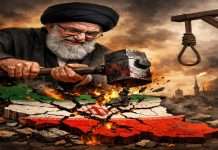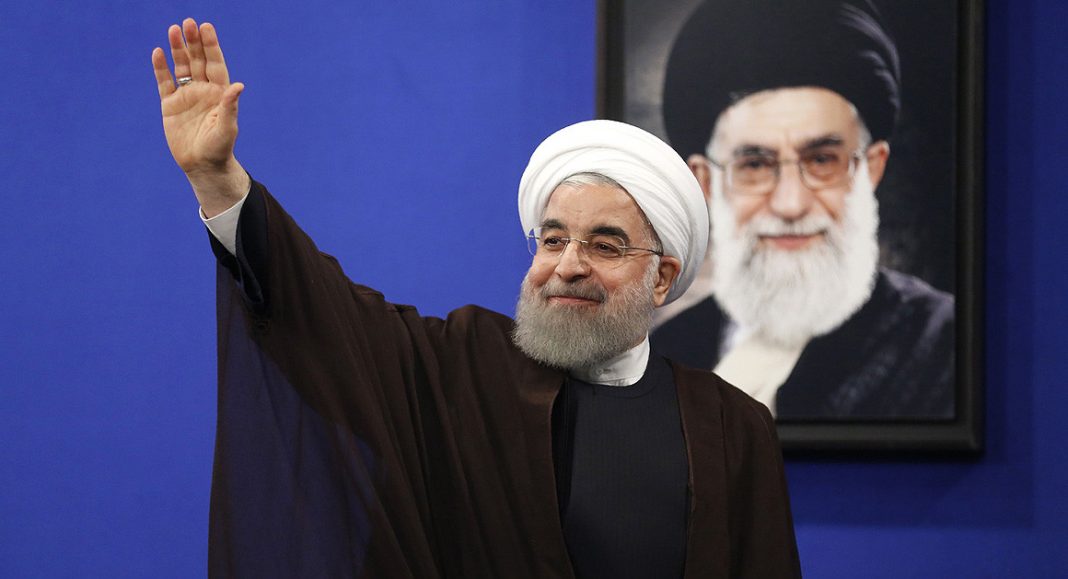Iran’s post-ISIS blues
Mohamad Kawas/The Arab Weekly/July 17/17
These days, the American agenda in the region does not go well with Iran’s mood.
Iran reaped major benefits by cooperating with the United States and the international coalition in the post-September 11 invasions of Afghanistan and Iraq. The purely American agenda in the region eliminated in one blow two strategic enemies to Iran: The Taliban in power to the east and Saddam Hussein’s regime to the west.
These days, however, the American agenda in the region does not go well with Iran’s mood. Something has changed in Washington and it is irking the regime in Tehran. It was very happy when Kabul and Baghdad fell to American hands in 2001 and 2003, respectively, but it certainly was not comforted by American military presence on its eastern and western borders.
The Taliban and Saddam regimes represented regional threats to Iran but with the US presence in the region, it is the very existence of the revolution regime that is at stake.
Tehran and Moscow had covertly agreed to aid the Taliban resistance against the American invasion. The United States knew that the level of armament and of intelligence in the hands of the Afghan jihadist movement was far superior to the movement’s limited resources.
While the Russians remained discrete about their role in Afghanistan, the Iranian regime did not try hard enough to hide its own role in the affair. In recent years, Iranian officials publicly met in Tehran with leaders in the Afghan movement and the Iranian media regularly reported the movement’s news.
Iraq was a different story. Iran was clearly opposed to the US presence in Iraq. Its position was visible in the actions of the Iraqi national opposition and in the anti-coalition stance of Muqtada al-Sadr’s movement. Let’s not even talk about Iran’s role in the reincarnation of al-Qaeda under the leadership of Abu Musab al-Zarqawi and its different subsequent versions that led to the appearance of the Islamic State (ISIS) headed by Abu Bakr al-Baghdadi.
All these anti-American presence workshops can be traced to two major geographical sources: Tehran and Damascus.
In Syria, the Iranian regime had enough clout to influence security decisions. This is how the Syrian security apparatus followed strictly the Iranian agenda in the area by facilitating the crossing of jihadists to Iraq. It also closely collaborated with Iranian agents to maintain communication channels with all the jihadist movements, including the Sunni ones, in the area.
Former al-Qaeda members revealed that its chief, Ayman al-Zawahiri, had instructed al- Qaeda-related movements not to target Iranian interests in recognition of Tehran’s support and aid. These ties between a Shia regime and anti-Shia organisations might seem deeply paradoxical but, in fact, are in keeping with the Iranian regime’s Machiavellian approach to its security and interests.
We have in the “Irangate” scandal of 1985 a perfect illustration of this stance. At that time, the Iranian regime used American agents to purchase 3,000 TOW missiles from Israel to be used in the Iran-Iraq war. For its survival, ideological principles are of no use to the Iranian regime.
The mystery behind the appearance of ISIS must be found within the framework of the traditional collusion between Iranian and Syrian intelligence services and, in the case of ISIS, the Iraqi intelligence services as well.
Logically, this collusion is made possible only because of Iran’s dominance of the political regimes in Iraq and Syria. During the US occupation of Iraq, the Iranian and Syrian regimes actively collaborated to nurture and sustain armed resistance groups opposed to the US presence.
In a surrealistic repeat of circumstances, Baghdad and Damascus simultaneously released imprisoned jihadist leaders who quite naturally regrouped in al- Qaeda and ISIS. The two organisations have not always seen eye to eye. ISIS, under the leadership of Baghdadi, ended up founding the “Islamic State” in what was essentially Iraq, while the Nusra pseudo-state was created in Syria under Abu Muhammad al-Jolani.
It might be unfair to blame the Iranian regime for the entire terrorist phenomenon in the region. What is, however, fair to say is that this regime has collaborated with just about all of the terrorist organisations in the region and has benefited from their activities. The political Islamist movements seemingly had access to Iranian political, media, military and financial support, some of it covert and some overt.
Therefore, the unprecedented international determination to fight terrorism must not stop at the technical and tactical aspects but must reach all the way to the behind-the-scene sources that continue to finance it or facilitate it.
The Iranian regime is perfectly aware of this shift in international strategy and knows that the elimination of ISIS spells bad news for it. This time, the Americans are no longer unwittingly doing the Iranian regime a favour. By eliminating ISIS, the Americans are depriving Tehran of its network inside the region and preparing to isolate it internationally.
The international mood has shifted. With US President Donald Trump insisting since the Riyadh summit on the necessity of putting an end to the financing of terrorist organisations, Iran will no longer be able to get away with the claim that has long served its interest, namely that terrorism is a legitimate political tool. For the first time since the Islamic revolution, Iran is experiencing the revolution’s decline.




















